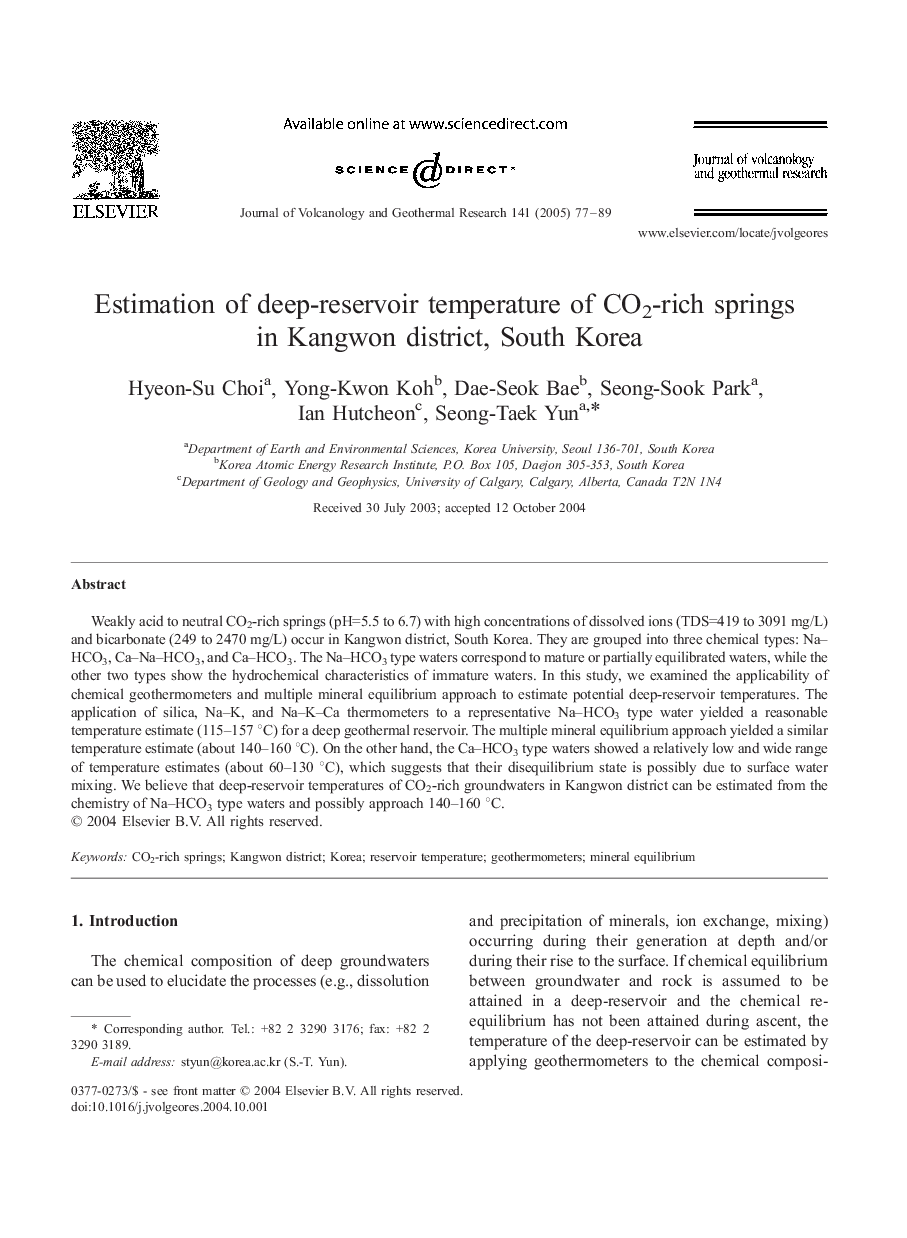| Article ID | Journal | Published Year | Pages | File Type |
|---|---|---|---|---|
| 9531109 | Journal of Volcanology and Geothermal Research | 2005 | 13 Pages |
Abstract
Weakly acid to neutral CO2-rich springs (pH=5.5 to 6.7) with high concentrations of dissolved ions (TDS=419 to 3091 mg/L) and bicarbonate (249 to 2470 mg/L) occur in Kangwon district, South Korea. They are grouped into three chemical types: Na-HCO3, Ca-Na-HCO3, and Ca-HCO3. The Na-HCO3 type waters correspond to mature or partially equilibrated waters, while the other two types show the hydrochemical characteristics of immature waters. In this study, we examined the applicability of chemical geothermometers and multiple mineral equilibrium approach to estimate potential deep-reservoir temperatures. The application of silica, Na-K, and Na-K-Ca thermometers to a representative Na-HCO3 type water yielded a reasonable temperature estimate (115-157 °C) for a deep geothermal reservoir. The multiple mineral equilibrium approach yielded a similar temperature estimate (about 140-160 °C). On the other hand, the Ca-HCO3 type waters showed a relatively low and wide range of temperature estimates (about 60-130 °C), which suggests that their disequilibrium state is possibly due to surface water mixing. We believe that deep-reservoir temperatures of CO2-rich groundwaters in Kangwon district can be estimated from the chemistry of Na-HCO3 type waters and possibly approach 140-160 °C.
Related Topics
Physical Sciences and Engineering
Earth and Planetary Sciences
Geochemistry and Petrology
Authors
Hyeon-Su Choi, Yong-Kwon Koh, Dae-Seok Bae, Seong-Sook Park, Ian Hutcheon, Seong-Taek Yun,
